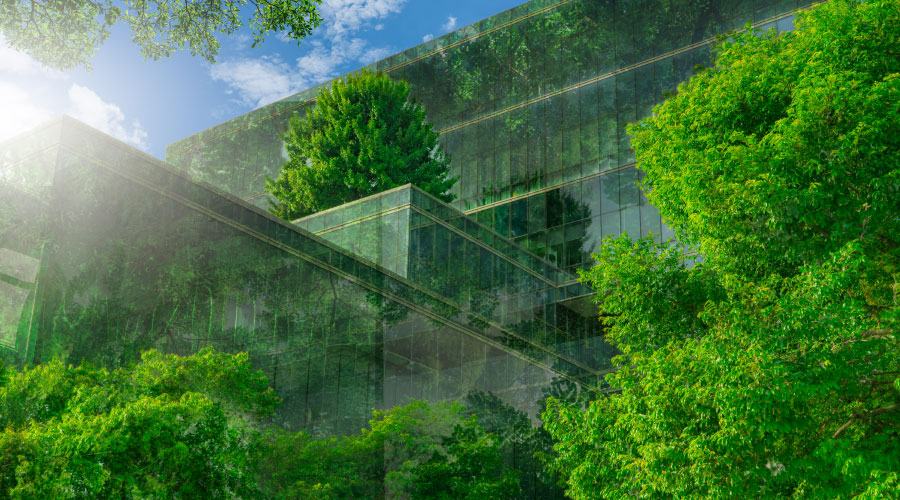Best Practices: Daylighting, IAQ, Green Cleaning and More
5. Consider Daylighting — Energy efficient lighting technology and design have advanced by leaps and bounds in the last decade. Increased utilization of natural light can reduce consumption twice: once by using the "free" light from the sun and again by reducing cooling loads since a lumen of daylight has less heat than a lumen of artificial light. Improvements in energy performance through more efficient lamps and control systems have further advanced sustainable options through lighting design.
6. Restroom Savings — When upgrading restroom facilities during a building retrofit, it is generally necessary to replace existing plumbing fixtures with newer, more water-efficient models, including water closets, urinals, sinks and showers (when applicable). Removing the older water closets and urinals is the best way to achieve peak performance as well as cost (and water) savings.
For example, high efficiency toilets can reduce water use by 20 to 40 percent. Other simple, sustainable solutions would be to install "touchless" lighting, faucets and hand dryers which are controlled by sensors, replace ceiling tiles with those with high recycled content, and use low-VOC paints.
7. Make Sure Occupants Can Breathe Easy — Indoor air quality may be a key occupant issue for the future. Choices about everything from the presence of volatile organic compounds in the paint to formaldehyde in the cabinetwork to filtration of air in the mechanical system can affect the health and productivity of workers via the quality of the air they breathe. The importance of this issue is amplified by design of tight building envelopes and reduction of fresh air intake quantities that are important for reductions in energy use.
The rapid rise in the incidence of asthma and other respiratory illnesses over the last decades is being linked to the reduction in indoor air quality in the same period. Improving buildings during retrofit by specifying materials and assemblies that reduce toxicity can help reverse that trend.
8. Clean Green — There is no better time than after a sustainable retrofit to implement a green cleaning program. This will help ensure that future operations beyond the retrofits are more sustainable. Use Green Seal's GS-42 as a guide to sustainable cleaning products and include green cleaning criteria in RFPs to potential cleaning providers. Day cleaning is another strategy facility managers are increasingly utilizing. By eliminating the need for keeping lights on at night to clean, energy can be saved. And facility managers have found that when occupants can see the building being cleaned and can build a relationship with the workers who are cleaning it, they're happier with the cleaning.
9. Reuse, Recycle — Retrofits may present an opportunity to streamline recycling programs. Educate occupants on where recycling bins are located, what can be recycled or composted, and who to contact with questions and concerns.
10. Look For Best Practices — The most sustainable retrofits will often not be glamorous or involve risky or experimental techniques. Off-the-shelf technologies and common sense solutions frequently produce excellent results. State-of-the-art in building construction has advanced substantially since many of the current candidates for retrofit were built. Simply employing current best practices can create significant sustainability improvements.
As we challenge ourselves to reduce the carbon footprint of our buildings, understanding each project's unique challenge is the first step in being able to identify improvements in areas such as wall assemblies, heating and ventilation, lighting and other operating systems that can produce a more energy-efficient and sustainable building. The concepts of sustainable design are not new, but our awareness of their importance has grown substantially in recent years.
Architects, engineers, facility managers and other professionals who have kept abreast of recent advances and who are passionate about the importance of these issues are far more interested in even routine retrofits than they might have been a decade ago. There is a new awareness that sustainability is an important challenge for the building industry — one that cannot be ignored.
Lawrence W. Speck, FAIA, is an architect with Page Southerland Page and a professor in the School of Architecture at University of Texas at Austin where he served as dean from 1992 to 2001. His publications include over 50 articles in professional journals, chapters in 11 books by others and two books.
Related Topics:












